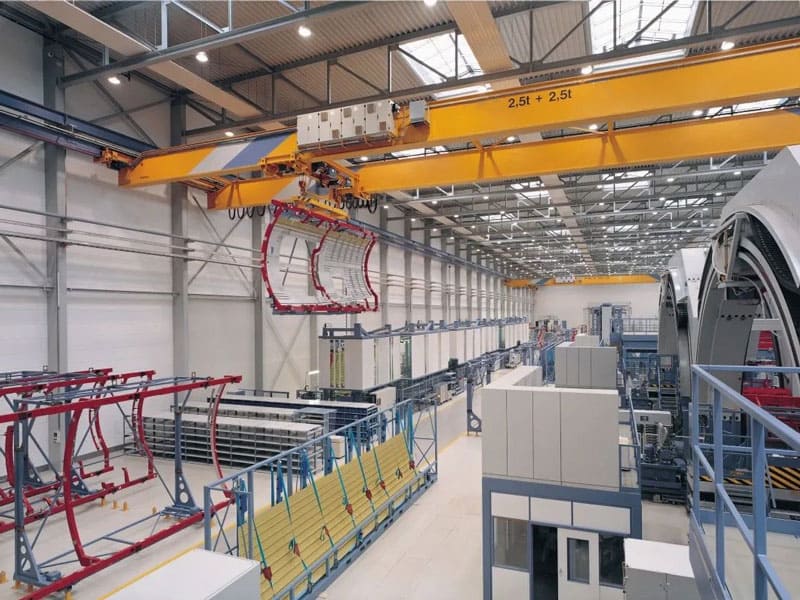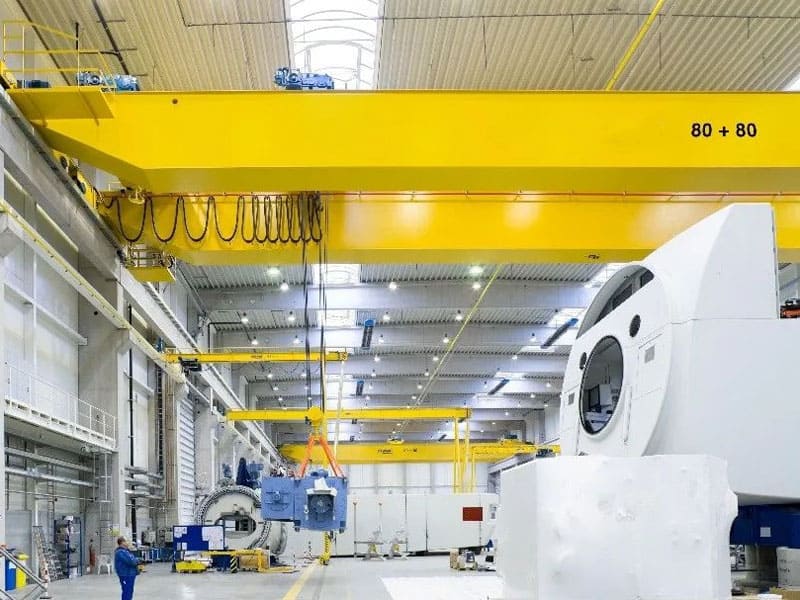Bridge crane is a widely used lifting equipment in industrial, construction, port and other places. Its basic structure are as follows:
Bridge Girder
Main Girder: The main load-bearing part of a bridge, spanning over the work area, usually made of steel, with high strength and stiffness.
End Girder: Connected at both ends of the main beam, supporting the main beam and connecting supporting legs or tracks.
Legs: In a gantry crane, support the main beam and make contact with the ground; In a bridge crane, the supporting legs come into contact with the track.
Trolley
Trolley Frame: A mobile structure installed on the main beam that moves laterally along the track of the main beam.
Hoisting mechanism: including electric motor, reducer, winch, and steel wire rope, used for lifting and lowering heavy objects.
Hook or Lifting Attachment: Connected to the end of the lifting mechanism, used to grab and secure heavy objects such as hooks, grab buckets, etc.


Travel Mechanism
Driving Device: includes a driving motor, reducer, and driving wheels, controlling the longitudinal movement of the bridge along the track.
Rails: Fixed on the ground or elevated platform, providing a moving path for the bridge and crane trolley.
Electrical Control System
Control Cabinet: Contains electrical components that control various operations of the crane, such as contactors, relays, frequency converters, etc.
Cabin or Remote Control: The operator controls the operation of the crane through the control panel or remote control inside the cabin.
Safety Devices
Limit switches: prevent the crane from exceeding the predetermined operating range.
Overload Protection Device: Detects and prevents crane overload operation.
Emergency Braking System: Quickly stop the crane operation in emergency situations.
Post time: Jun-28-2024









